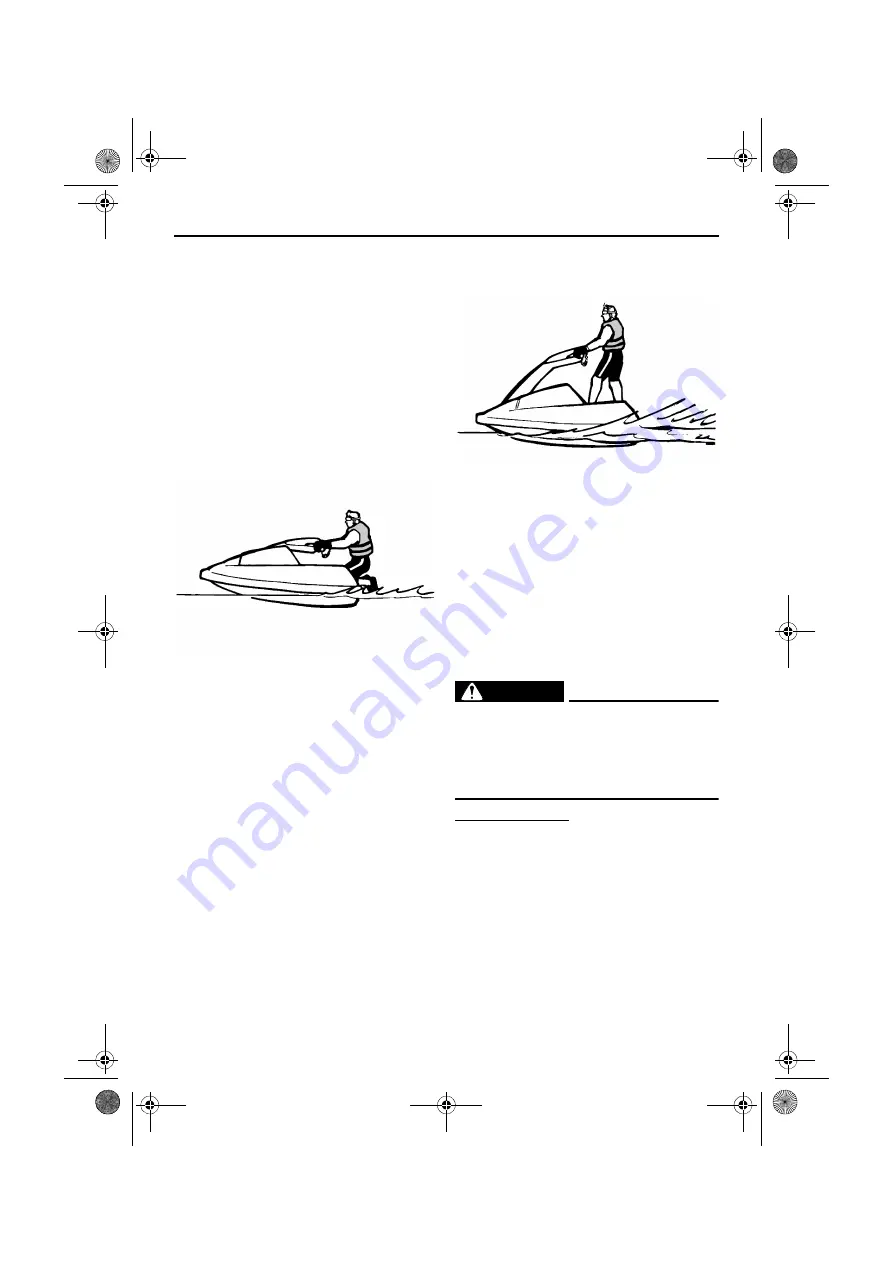
Operation
45
EJU33172
Operating positions
After you are underway, you may choose to
kneel or stand, depending upon watercraft
speed, your skill level, and your preference.
Here are some guidelines.
Kneeling
It is easier to maintain your balance when
kneeling than when standing. This position is
recommended when traveling at sub-planing
speeds. (At sub-planing speeds, there is a
wake, but the watercraft is moving through
the water rather than skimming on top of it.)
At very slow speeds, it may be necessary to
support your upper-body weight with your el-
bows resting on the gunwales, trailing your
legs in the water.
Standing
After you are comfortable handling the water-
craft from a kneeling position, try standing as
the watercraft gains speed. The watercraft
will become easier to balance as the speed
increases, because jet thrust provides stabil-
ity as well as directional control. When you
are moving slowly, or preparing to stop, you
will probably need to return to the kneeling
position to maintain your balance.
EJU32822
Launching the watercraft
When launching the watercraft, make sure
that there are no obstacles around you.
If the watercraft is launched from a trailer,
someone should make sure that waves do
not push the watercraft into the trailer.
After the watercraft is in the water, turn it
around so that the bow faces the direction
you wish to go.
EJU32836
Starting the engine on water
WARNING
EWJ01521
Do not apply throttle when others are at
the rear of the watercraft. Turn the engine
off or keep it at idle. Water and debris ex-
iting the jet thrust nozzle can cause severe
injury.
To start the engine:
(1) Move the watercraft to an area that is
free from weeds and debris, and has a
water depth of at least 60 cm (2 ft) from
the bottom of the watercraft.
NOTICE:
Never run the engine in water that is
less than 60 cm (2 ft) deep from the
bottom of the watercraft, otherwise
pebbles or sand could be sucked into
UF4D15E0.book Page 45 Tuesday, March 19, 2019 4:31 PM
















































